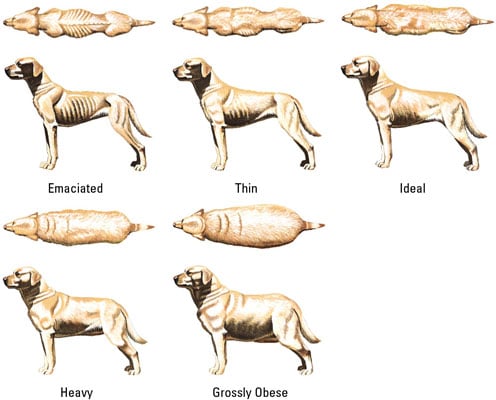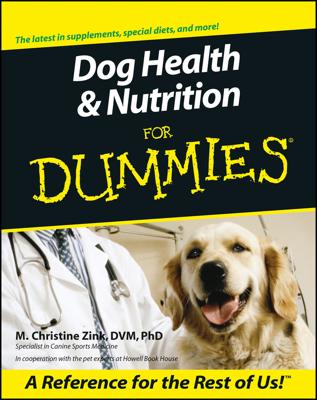To determine whether your dog is the correct weight, compare her body condition with the images here of how dogs typically look when they are overweight, underweight, and just right.

Evaluate your dog using the following three-step process:
Look at your dog from the side.
Her tummy needs to tuck up from her chest and not be level with or hang below her chest. If you can easily see a dog’s ribs, she’s probably underweight. But in some breeds, including Greyhounds, Whippets, and Italian Greyhounds, the dog’s ribs show at a normal weight.
Breeds with heavy coats need closer scrutiny because you probably can’t see ribs even when the dog is underweight, so try the next two steps for a more complete assessment.
Look at your dog from above.
As you stand over her and look down, your dog needs to have a visibly tucked-in waist, but her hipbones shouldn’t protrude too severely. If your dog looks like a barrel, a sausage, or a small beach ball with legs, she’s probably overweight. If her hips protrude sharply, she’s probably underweight. If she has a nice curve inward at the waist, she’s probably at a good weight.
Feel your dog’s sides for the ribs.
This test is especially important for heavily coated dogs, whose fur often conceals weight issues. If you can feel no evidence that your dog possesses a rib cage, she’s probably overweight.
If you can feel the ribs but they have a slight padding, like a light blanket over them, then your dog may be just right. If the ribs are obvious and feel like they’re covered with only the thinnest layer of skin, your dog may be underweight.
Obesity can cause many serious health problems in pets of any age. Too much weight stresses bones and joints, strains the heart and other internal organs, crowds the lungs, and turns a simple walk around the block into a major chore. In fact, overweight dogs suffer much the same risks and consequences as overweight humans.
Malnourished dogs don’t have it any better. Lacking crucial nutrients can lead to serious nutritional issues, too. Signs of malnourishment include a bloated abdomen, bleeding gums, and an emaciated body with ribs clearly visible.

